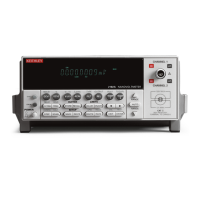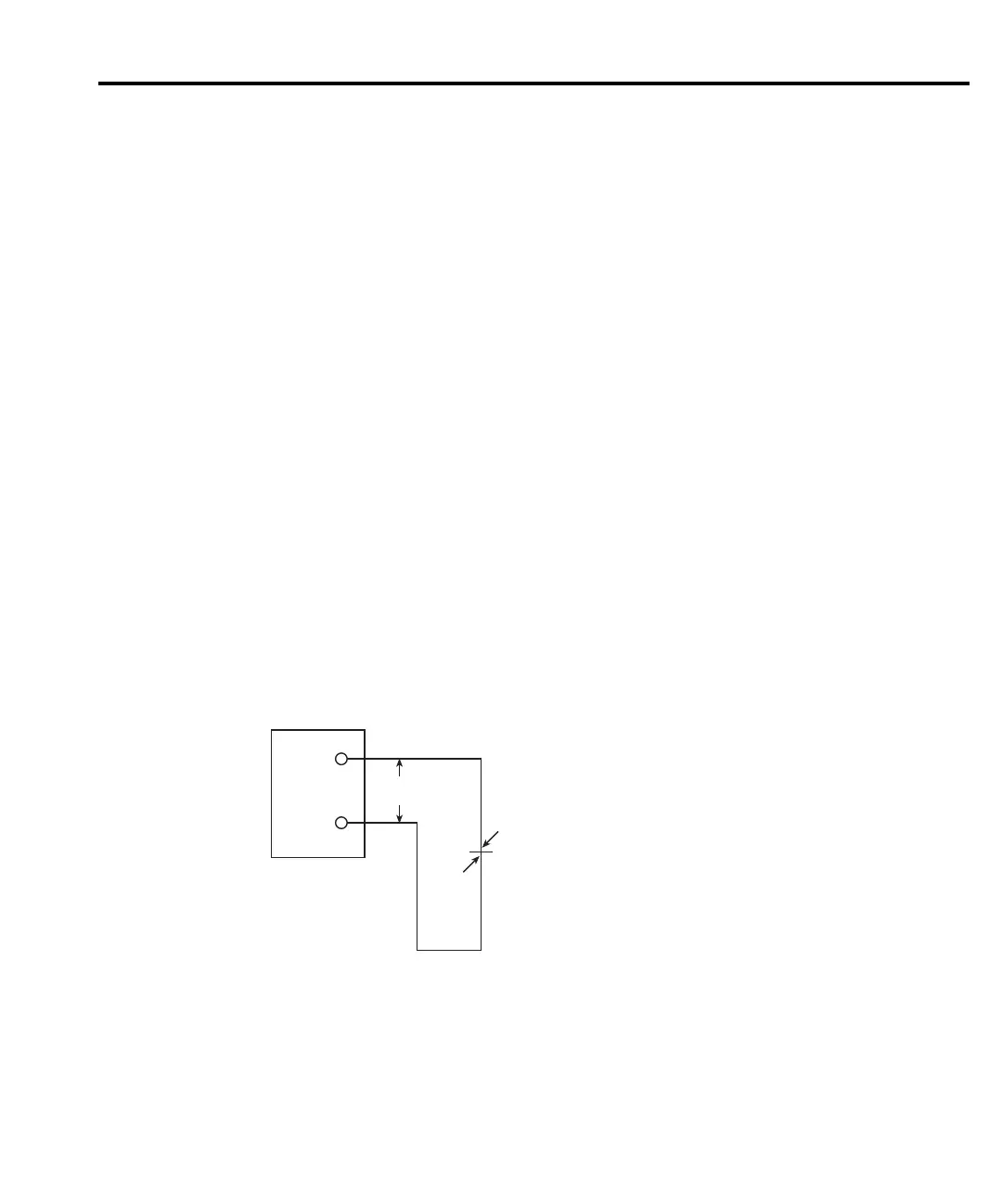Measurement Considerations C-3
Thermoelectric generation
Figure C-1 shows a representation of how thermal EMFs are generated. The test leads are
made of the A material, while the source under test is the B material. The temperatures between
the junctions are shown as T
1
and T
2
. To determine the thermal EMF generated, the following
relationship may be used:
E
T
= Q
AB
(T
1
– T
2
)
where: E
T
= Generated thermal EMF
Q
AB
= Thermoelectric coefficient of material A with respect to material B (µV/°C)
T
1
= Temperature of B junction (°C or K)
T
2
= Temperature of A junction (°C or K)
In the unlikely event that the two junction temperatures are identical, no thermal EMFs will
be generated. More often, the two junction temperatures will differ, and considerable thermal
EMFs will be generated.
A typical test setup will probably have several copper-to-copper junctions. As pointed out
earlier, each junction can have a thermoelectric coefficient as high as 0.2µV/°C. Since the two
materials will frequently have a several degree temperature differential, it is easy to see how
thermal potentials of several microvolts can be generated even if reasonable precautions are
taken.
Figure C-1
Thermal EMF generation
HI
LO
E
T
= Q
AB
(T
1
– T
2
)
E
T
T
1
T
2
A
B
2182
CH1

